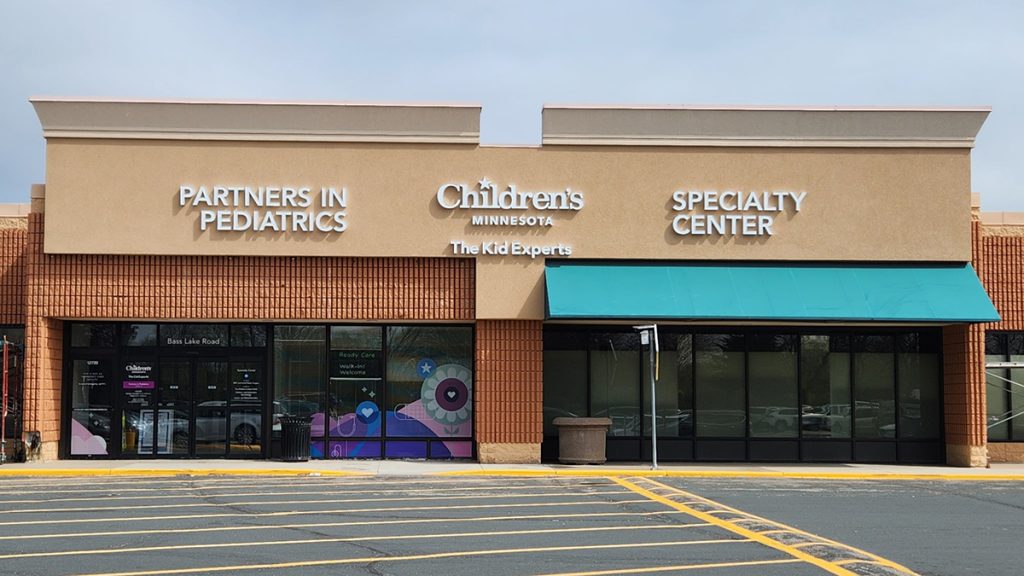Learn about our audiology services
Children’s Minnesota audiologists have expertise in providing comprehensive audiology services to meet the unique needs of newborns, infants, children, and adolescents. Our audiologists provide diagnostic and rehabilitative services using specialized equipment and a variety of methods to match the age and developmental level of each child.
Diagnostic services
- Visual reinforcement audiometry (VRA) – The child is taught to turn his or her head each time he or she hears a sound and is rewarded for each correct response with a lighted toy or screen animation. The child sits on the parent’s lap in a sound booth and the sounds can be presented through speakers or earphones. This testing method is typically used with children ages 5 months to 2.5 years.
- Conditioned play audiometry (CPA) – The child is taught to play a game such as putting a peg in a board or stacking rings/blocks each time he or she hears a beep or tone. The child can sit independently or on a parent’s lap in a sound booth for this test. This test is typically used with children ages 2.5 years to 5 years.
- Standard pure tone audiometry – The child sits in a sound booth and presses a button or raises a hand each time he or she hears a beep or tone. This test is typically used with children ages 6 years and older.
- Speech audiometry – Words or sentences are presented at the child’s most comfortable listening level to assess word recognition ability, or at very quiet levels to determine the softest level at which the child can begin to understand simple, familiar words. The child responds by repeating what is said or pointing to pictures or objects.
- Tympanometry – Assesses the middle ear system including the eardrum and the small bones behind the eardrum. A small, rubber tip is placed at the entrance of the ear canal and measurements are made within several seconds.
- Acoustic reflex testing – Assesses the auditory system’s reflex response to loud sounds. A small rubber tip is placed at the entrance of one or both ear canals, sounds are presented, and an involuntary muscle contraction inside the ear is measured.
- Otoacoustic emissions (OAEs) – A small soft earphone is placed in the ear canal. Sounds are sent into the ear and a very sensitive microphone measures how the inner ear reacts to the sounds in order to assess the functioning of the cochlea or inner ear without requiring a behavioral response. This test can be completed while the child is sleeping or awake and quiet.
- Brainstem audiometry (ABR or BAER) – Evaluates how each ear is receiving sound and sending it to the brain through the auditory nerve, without requiring a behavioral response. Sounds are played into each ear at various loudness levels and the brain’s responses to sounds are detected through small electrode stickers placed on the child’s head. These responses are recorded to determine the softest sounds the child can hear. This test is typically completed while the child is either in a natural or sedated sleep, depending on the needs of the child.
- Hearing aid evaluation – A hearing aid may be a treatment option for a child who has permanent or longstanding hearing loss. Following a comprehensive hearing evaluation and medical evaluation by a physician, a hearing aid evaluation can be completed. This evaluation includes discussion of various hearing aid devices, technology and accessories. The audiologist and family decide on a hearing aid treatment plan that is best for the child. This appointment may include taking an impression of the ear to obtain a custom earpiece. Hearing aid evaluations are performed for children ages birth to 18 years.
- Cochlear implant evaluation – Cochlear implants may be a treatment option for a child if the child’s hearing loss is severe enough that the child cannot receive sufficient benefit from a traditional hearing aid. A comprehensive evaluation assessing hearing as well as the child’s auditory development and benefit from hearing aids is completed to determine if the child is a good audiologic candidate for a cochlear implant. Appointments are coordinated with ENT, speech language pathology, and other developmental specialists as needed. These providers, along with the child and family, function as a team to determine cochlear implant candidacy and appropriate goals for the child. Cochlear implant evaluations are performed for children ages infant to 18 years.
Rehabilitative services
- Comprehensive fitting and dispensing of hearing aids, bone conduction hearing aids, FM/DM systems, and accessories
- Electroacoustic analysis of hearing aids, both real ear and test box
- Cochlear Implant evaluation and follow-up services
- Custom ear molds, swim molds, and hearing protection
- Consultation on audiology services for infants and toddlers to clinics throughout Minnesota and the five state region
Coordination of care
Our audiologists also provide services as a part of the ENT and Facial Plastic Surgery Clinic and appointments can be coordinated as needed.
In addition, Children’s Minnesota audiologists perform exams through our interdisciplinary clinics, such as developmental pediatrics, velocardiofacial (VCF) clinic and cleft and craniofacial clinics. We collaborate closely with speech language pathology, physical therapy, occupational therapy, genetics, and other specialty services at our hospitals.
When is an audiology evaluation recommended?
